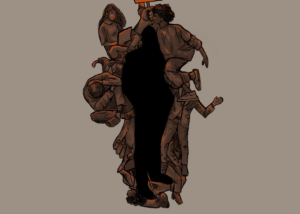It’s the night your English final paper is due and you find yourself pacing the floors of Lauinger library searching for that one mysterious spot where wireless Internet might work. From cubicle to cubicle you hike, stop and check your connection. Nothing. It’s problems like this that make schoolwork unnecessarily difficult for Georgetown students struggling to get by on a campus that is a long way from being wireless, but which must become so to remain competitive.
Lauinger Library, the Southwest Quad, O’Donovan dining hall, St. Mary’s and ICC—sounds like pretty decent coverage since these supposedly wireless areas are where you and your laptop will be spending a lot of your time. But Lauinger’s signal is perpetually shoddy, and even the spots that claim to be connected aren’t strong enough.
If you’re not a sophomore living in McCarthy, Reynolds or Kennedy and you want to bring your computer into a common room for a study session before your first big test of the semester then you’re in trouble. If you’re living in Harbin, looks like everyone will have to trudge down to the first floor computer lab. If you’re in Copley, whip out your slacks and ballroom dresses because the only place where you’ll find something as fancy as Georgetown-provided wireless Internet in your building is the Formal Lounge. And if you live in Nevils or LXR, fuhgeddaboudit.
A good wireless connection for students in all residence halls would be the bare minimum. Our competitors like William and Mary, Carnegie Mellon, Dartmouth, Wake Forest and even American are all among the top 50 wirelessly covered campuses, ranked by Princeton Review. Duke, which isn’t in the top 50, makes up for their technical difficulties by providing all incoming freshmen with new iPods.
As one of the nation’s top universities, Georgetown should be worried about its students and the environment in which they learn. Almost every class uses Blackboard, makes contacts via email or requires online research. There is no reason that Georgetown can’t provide wireless access in and around every busy spot on our compact campus. The hardware is already in some buildings and similar campuses nation-wide have done it for a relatively cheap price tag . A $125,000 grant (approximately the price of just two-and-a-half Georgetown tuitions) jumpstarted a plan that set up towers and made wireless internet accessible at Carnegie Mellon University and Glenville State College in West Virginia.
The school need not worry about people from outside the campus stealing the service. Providers already factor into the costs the possibility of more IP addresses using the service than originally planned, so it wouldn’t be hurting the school if someone (a student most likely who is already paying for the service) living off-campus uses the HOYAS wireless every so often. Georgetown should use the popular Virtual Private Network service, which requires Net ID and password login to protect the security of the network. The school owes it to its students who are forced to struggle or strategize their places of study just to make sure they’ll have internet. Right now, the message the University is sending shows that their connection with students is weaker than HOYAS on the lower level of Lauinger.




